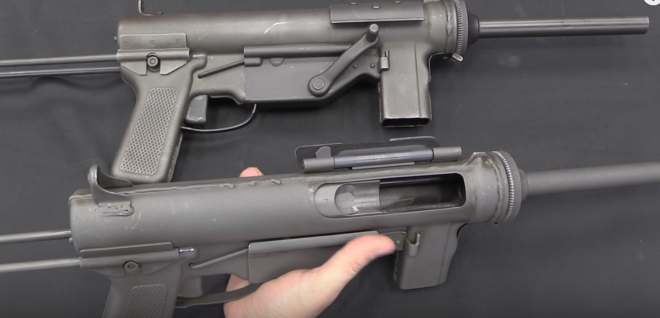I love it when Ian over at Forgotten Weapons falls off the actual “forgotten” weapons and delves into well-known and respected designs. His brain housing group is replete with an encyclopedia of facts and history on weapons and when applied to even well-known guns, I personally come away learning more. In this case, Ian takes a look at the M3 submachine gun fielded by the United States in World War 2 and slightly beyond. The M3, knick-named the “grease gun” for its external resemblance to
In this case, Ian takes a look at the M3 submachine gun fielded by the United States in World War 2 and slightly beyond. The M3, knick-named the “grease gun” for its external resemblance to a well-known mechanic’s tool. The weapons were fielded to replace the venerable Thompson, which while well-respected, had considerable manufacturing costs, even with features removed for the war effort.
Perhaps most interesting is the transition from the M3 to the M3A1, which on briefly made an impact on the war. The changes were relatively minor primarily to the charging handle, which moved from a pivoted design prone to break due to poor heat threat to a machined out cut in the bolt, where the soldier used a digit to cock the action.
Its further interesting to see the design choices to make a weapon as simple as possible. For the full details and to remember a not forgotten weapon, check out the video from Forgotten Weapons below:
 Your Privacy Choices
Your Privacy Choices
